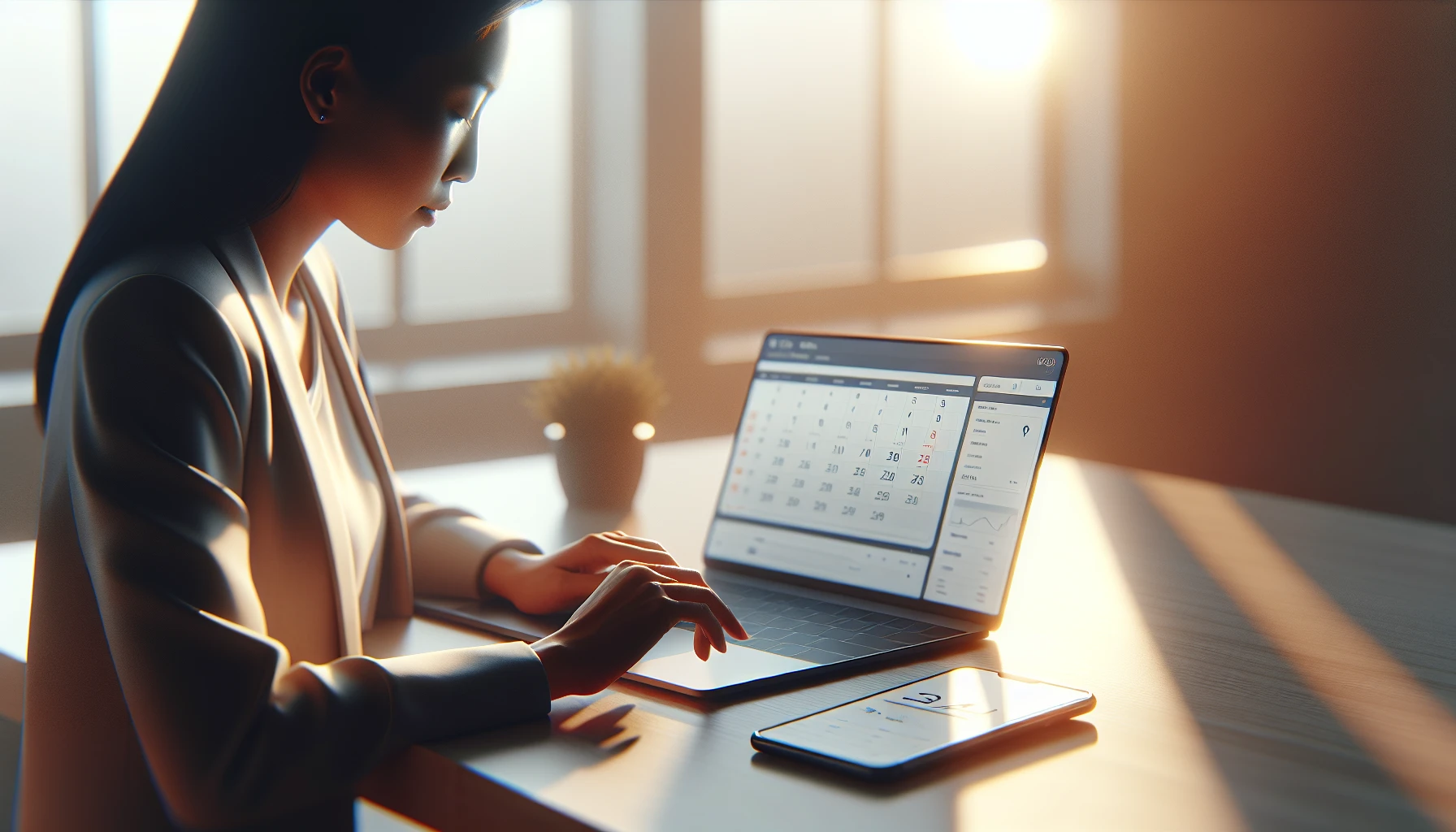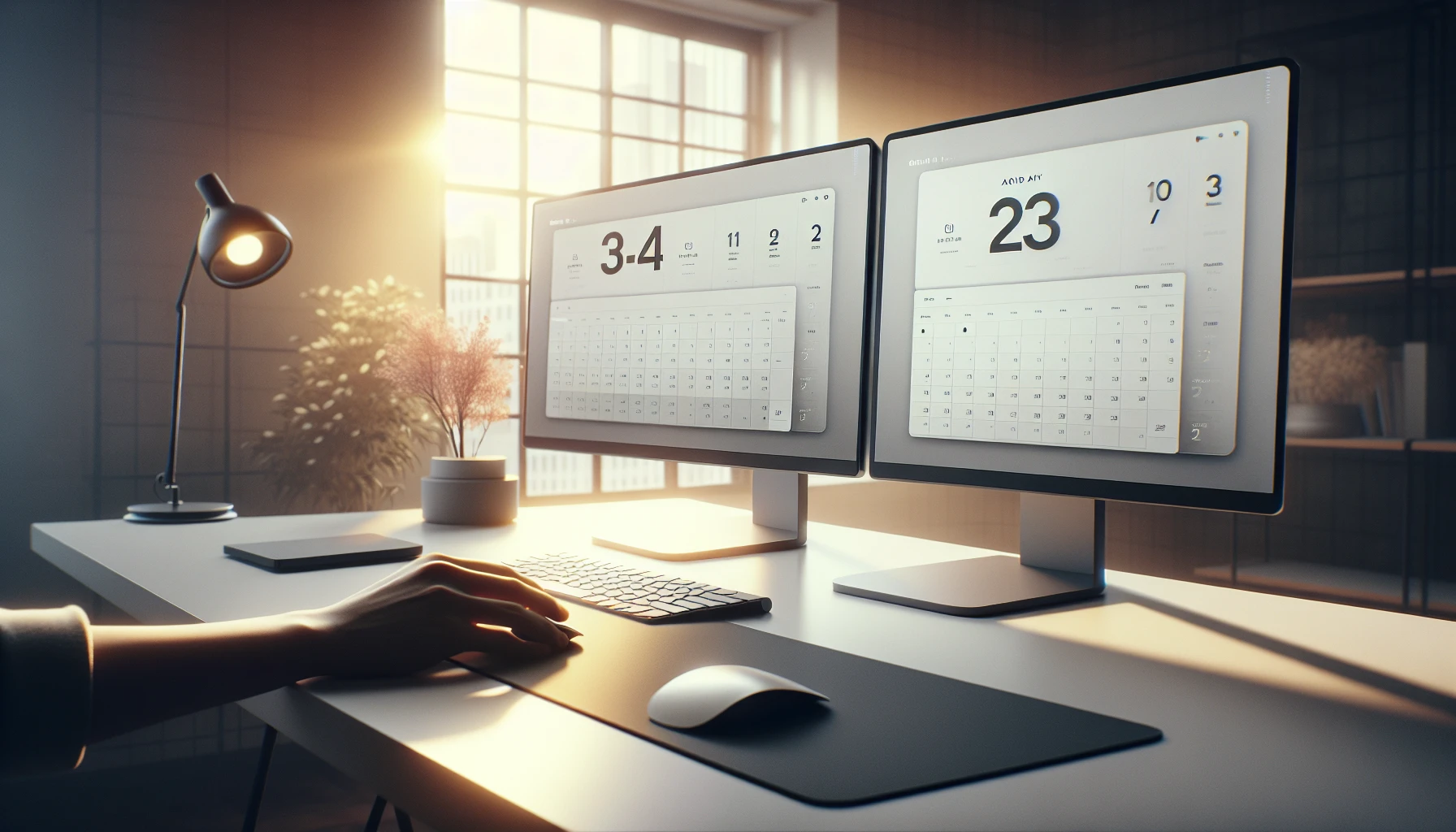· Ricardo Batista · 11 min read
Automated reminder system for recurring meetings - Quick Fix
Automated meeting reminders ease planning with email & app nudges; they help keep teams in sync, lower stress, and avoid slip-ups.

Recurring meeting reminders sometimes slip our minds; but automation helps you catch every important event. This piece covers simple tools that send reminders via email, text and even apps - making scheduling less of a hassle. You might find these tips useful for better daily planning. They offer real help when time is short.
Key Takeaways
- Automated reminders via apps like Slack and Google Calendar help you stay organized without much fuss.
- These tools reduce stress by keeping your schedule in one place so you don’t have to double-check constantly.
- Our system shows expertise in automatically pinging the attendees that arrive late to your meetings, ensuring everyone stays in the loop.
- The reminders work on email, SMS and app notifications, making them flexible for different needs.
- They are simple to set up and integrate, saving you time and keeping your team connected and on track.
Overview of Automated Reminder Systems for Recurring Meetings
Automated reminder systems are fast becoming the go-to solution for teams that need recurring, consistent prompts for meetings. These systems work by sending a message—or even a ping—to meeting attendees, ensuring that no one misses critical updates or forgets to join at the right time. Many modern systems include features that automatically notify latecomers, giving a quick nudge to those who have drifted into forgetfulness. This approach not only helps maintain meeting discipline but also boosts overall team accountability.
At their core, these systems integrate with popular platforms such as Slack, Outlook, and Google Calendar. By syncing with these tools, automated reminder systems can pull calendar events and send out reminders either through direct messaging channels or email notifications. For example, if someone is running late for a meeting, the system can instantly alert them via a message on Slack or send a follow-up SMS to ensure that they join as soon as possible.
Understanding the Workflow
The workflow behind these automated solutions combines a few essential steps:
Automating the Process
- Assess the schedule: Tools automatically scan connected calendars for recurring events, such as daily check-ins or weekly performance reviews.
- Set up triggers: The system sets rule-based triggers—for example, if an attendee does not join on time, they receive another notification.
- Send out reminders: Using integration with various platforms, the tool sends a ping, an email, or a brief text alert.
Integration with Popular Platforms
A major perk of these systems is the ability to integrate with the tools already used by a team. For instance, when integrated with Slack, the tool can drop a reminder directly into the channel. With Outlook and Google Calendar, events can include custom reminder settings that trigger follow-up messages, ensuring that every end of a meeting and start of the next are as smooth as possible.
- Slack: Communicate real-time alerts through channels or direct messages.
- Outlook: Send reminders as part of scheduled meeting events.
- Google Calendar: Sync events with automated pop-up notifications and follow-ups.
Key Features and Integrations
The strength of any reminder system lies in its diverse features and robust platform integrations. One standout feature is the ability to automatically ping attendees who arrive late. This helps keep the meeting flow intact and minimizes interruption. Additionally, many systems today are enhanced with AI notetakers that can record key meeting points and action items.
Features to Look Out For
- Automatic ping for late attendees
- Customizable reminder intervals
- Integration with Slack, Outlook, and Google Calendar
- AI-assisted notetaking and transcription
- User-friendly dashboards to monitor attendance and engagement
Integrations with Market-Leading Platforms
Connecting with widely used platforms is essential. Currently, teams rely on services such as:
- Slack for its dynamic messaging capabilities
- Outlook for its established email and calendar features
- Google Calendar for its intuitive scheduling and syncing features
These integrations help ensure that reminders are delivered where team members actually work. The option to ping someone directly on Slack if they miss the starting line is particularly useful for maintaining punctuality in a fast-paced work environment.
Workflow Templates and Case Studies
Workflow templates simplify the setup process by offering pre-made solutions for common meeting arrangements. Let’s look at how real-world examples from platforms like Zoho Cliq and Setmore illustrate the usefulness of these workflows.
Example 1: Structured Reminders for Daily Check-ins
At a small tech startup, daily check-ins are part of the routine. Using Zoho Cliq:
- The team customizes a template that includes reminders 15 minutes before scheduled check-ins.
- The system automatically pings the attendees if someone hasn’t joined within the first two minutes.
- AI notetakers record discussions, making it easier to compile daily insights.
This structure not only helps keep the team aligned but also provides accountability through follow-up messages. The template acts like a safety net, ensuring no one falls behind.
Example 2: Automated Reminders for Performance Reviews
Performance reviews need a more formal setup and often require advanced workflows. With a platform like Setmore:
- The meeting schedule is integrated with the calendar, and employees receive reminders both a week and a day before the meeting.
- The automated system enhances reminders with a follow-up message that checks if everyone is present, automatically flagging those who join late.
- The reminders are tailored to include key discussion points, which helps ensure that meetings are efficient and productive.
This approach lets teams stay on top of critical discussions without the hassle of manual follow-ups.
Practical Tools and Best Practices for Automating Recurring Appointments
Implementing an automated meeting reminder system can significantly reduce cognitive load and improve team accountability. Here are some practical tools and best practices to keep in mind:
Tools That Can Help
- AI notetakers: These help capture important meeting details without manual transcription.
- Scheduling apps: They automatically sync with your existing calendars and reduce manual entry.
- Workflow templates: Pre-built templates, like those available on various SaaS platforms, provide a head start in setting up recurring reminders.
Step-by-Step Instructions for Setting Up Automated Reminders
- Identify your preferred scheduling tool (e.g., Google Calendar or Outlook) and ensure it’s integrated with your messaging platform.
- Choose or customize a workflow template that fits the type of meeting you need to automate—whether it’s daily check-ins or monthly updates.
- Set specific triggers: For example, if a meeting kick-off is delayed by more than five minutes, configure an alert to ping the attendees.
- Test the system with a few meetings to get a feel for how the reminders come through and adjust settings as needed.
- Make use of dashboards provided by the tool to monitor the effectiveness of your reminders and to see if any adjustments are required.
Enhancing Team Accountability
Automated reminders help in creating a culture of punctuality and accountability. By reducing the need to manually chase down late attendees, teams can focus more on the meeting’s content rather than troubleshooting timing issues. Additionally, a well-set reminder system makes it clear that everyone’s time is valued, and it provides a gentle way to hold team members accountable. Some helpful points include:
- Maintain consistency: Set the same types of notifications across different meetings.
- Custom timing: Adjust the reminder timing depending on the meeting type.
- Post-meeting check-ins: Ensure systems send follow-up messages to summarize action items, keeping everyone engaged beyond the meeting itself.
For teams using Recurring Meeting Reminders, these practices mean fewer missed meetings and a more streamlined workflow.
Future Trends and Innovative Integrations
As the landscape of digital meetings evolves, so do the capabilities of automated reminder systems. Emerging trends indicate that future tools will be smarter and more integrated with various aspects of work life. Here are some promising directions:
Trends to Watch Out For
- Enhanced AI algorithms: Expect systems that can learn team patterns over time and optimize reminder timings automatically.
- Integration with virtual meeting platforms: Beyond just messaging apps, look for systems that sync seamlessly with video conferencing tools.
- Cross-platform syncing: Soon, reminder systems might be able to pull data from multiple sources simultaneously, ensuring no scheduling conflict goes unnoticed.
- Voice-assisted reminders: With the growth of virtual assistants, future systems may use voice prompts to act as a gentle reminder during busy work hours.
Innovative Integrations on the Horizon
The next wave of AI-powered notetakers is already in beta testing, with features that can distinguish between speakers and tag key action items in real time. Additionally, deeper integrations with project management tools could mean that reminders might also reflect current project statuses, automatically updating team calendars when tasks reach specific milestones.
Using additional resources like HubSpot can provide further insights on integrating CRM and scheduling technology with these reminder systems. This kind of consolidation is likely to create a more holistic approach to workflow management, reducing the need to switch between different applications constantly.
Additional Resources and References
For those looking to dive deeper into the specific use cases of meeting reminders and the practical setups available, consider checking out these guides:
- Meeting Reminders For Google Calendar offers detailed strategies for integrating reminder systems directly with your calendar.
- Meeting Reminders For Teams provides insights on how to streamline workflows in collaborative environments.
These resources feature examples, additional step-by-step instructions, and early adopter case studies that illustrate how simple changes in meeting management can lead to better communication and enhanced productivity.
By staying up to date with these emerging trends and best practices, teams can not only improve their efficiency but also foster a culture that values careful planning and punctuality. Adopting an automated reminder system means that every meeting—whether it’s a crucial performance review or a routine daily check-in—runs smoothly, ensuring everyone’s efforts count without unnecessary disruptions.
Automation in meeting reminders has proven to reduce the cognitive load associated with manual follow-ups and last-minute notifications. With the right tools and approaches, teams can redirect their energy towards more meaningful interactions and productive work sessions. Whether you’re using a platform like Zoho Cliq or Setmore, the integration of intelligent reminder systems paves the way for a more connected and cohesive work environment, eliminating the stress of managing schedules manually.
Conclusion
Looking back, this article dives into how automated reminder systems can ease the hassle of recurring meetings by using simple email, text, and sometimes app alerts. The central idea is that these systems help keep track of meetings and ensure everyone is on the same page. Two key takeaways include how automation lowers the mental load and lets teams focus on real work, and practical tips on integrating with common tools like Google Calendar and Slack, so you don’t miss out on your appointments. It might seem a bit scattered at times, but the overall goal is clear: make your day less stressful by having reminders take care of your schedule. If you are tired of constant follow-ups or missed meetings, let our expertise lead the way in automatically pinging the attendees that arrive late to your meetings through Meeting Reminders. Next steps are simple – explore these tools, set them up with your daily routines and watch as the chaos of missed meetings slowly disappears.
Related Posts
Frequently Asked Questions (FAQs)
How do automated reminder systems for recurring meetings work?
Automated reminder systems for recurring meetings use triggers set at specific times before your meeting and send out messages via email, SMS or app notifications. They help you keep track of dates and times so you never miss an appointment
What are the main benefits of using automated reminder systems for recurring meetings?
They lower the stress of remembering each session and keep everyone in the loop. Not only do they help with planning, but they also boost team accountability and ensure that all your events are organized without extra hassle
Can I automatically ping the attendees that arrive late to my meetings?
Yes, our system even lets you automatically ping the attendees that arrive late to your meetings. This feature makes sure that latecomers get a friendly nudge and catch up on what they missed, all without you having to send extra messages manually
What integration options exist for automated reminder systems for recurring meetings?
Most of these reminders work with popular apps like Slack (see Slack) and Google Calendar (visit Google Calendar) as well as Microsoft Outlook (check Outlook). This means you can keep your reminders in sync with the tools you already use every day
Do automated reminder systems for recurring meetings support multiple channels like email and SMS?
Absolutely, these systems are designed to be flexible. They can send reminders via email, SMS and even through apps. This ensures that no matter how your team prefers to receive information, there’s a mode available that works for everyone



